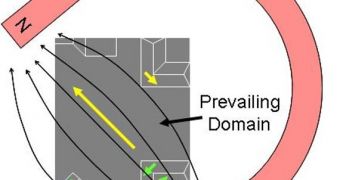Experts from the Children's Hospital Boston (CHB) have recently devised a new method of controlling nanoparticles and the drugs they contain, via the use of magnets. There is little doubt among healthcare professionals that nanostructures will deliver drugs to people's bodies in the future. But one of the problems preventing development in this field was the fact that experts could not get the small structures to release their loads step by step, rather than all at once. The new technique devised at the CHB can do just that, and therefore holds the key to more effective, long-duration treatments.
A wide range of medical conditions, from chronic pain and diabetes to cancer, requires the constant administration of drugs, but researchers couldn't use nanoparticles for the job until now. Switching drug-delivery systems 'on' and 'off' has thus far been attempted with electronic chips or heat sources, but only moderate success has been recorded via these methods. The new device is only half an inch in size, and encapsulates its drug load in a specially designed membrane.
The membrane is embedded with nanoparticles, less than 1/100,000 of a human hair in width each. They are made of magnetite, a mineral that naturally has magnetic properties. The entire device is turned 'on' when a magnetic field is present near the patient's body. The nanoparticles begin to heat up, and cause the membrane to collapse temporarily. This allows for the active drugs to be released in short bursts. By manipulating the external magnetic field, healthcare providers can accurately dose the drug over extended periods of time, on an as-needed basis.
“A device of this kind would allow patients or their physicians to determine exactly when drugs are delivered, and in what quantities,” CHB Department of Anesthesiology Laboratory for Biomaterials and Drug Delivery expert Daniel Kohane, MD, PhD, says. He has been the leader of the research effort.
“This novel approach to drug delivery using engineered 'smart' nanoparticles appears to overcome a number of limitations facing current methods of delivering medicines. While some distance away from use in humans, this technology has the potential to provide precise, repeated, long-term, on-demand delivery of drugs for a number of medical applications, including the management of pain,” anesthesia grants overseer Alison Cole, PhD, from the National Institutes of Health's (NIH) National Institute of General Medical Sciences (NIGMS), adds.

 14 DAY TRIAL //
14 DAY TRIAL //